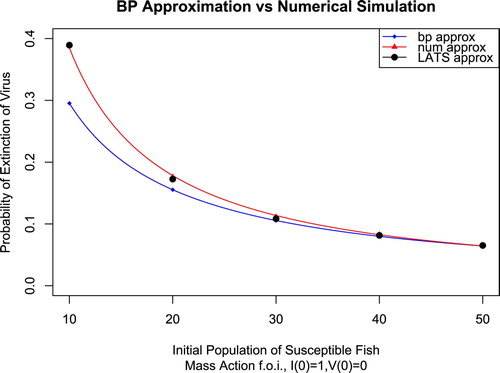Figures & data
Table 1. State transitions and rates for the single patch CTMC, 

Figure 1. The size of the susceptible population at the disease-free quasistationary distribution is given by . β is the independent variable, while
are fixed. The probability of extinction is approximated using branching process approximation (blue), numerical simulation via Gillespie algorithm (red) and LATS (black).

